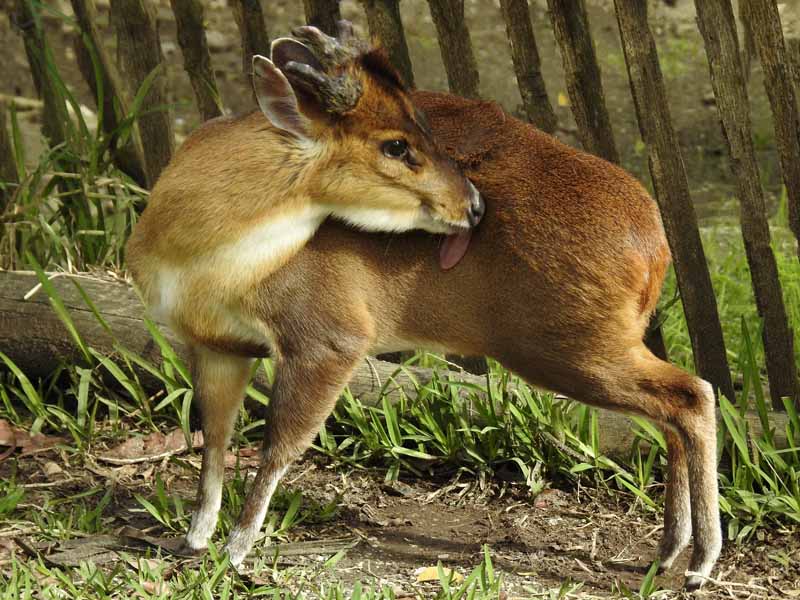


Southern Red Muntjac















The Southern red muntjac or Indian muntjac (Muntiacus muntjak) is one of more than ten subspecies of muntjac, all originating in Southeast Asia, although some of them have been introduced to the European continent. Originating from the Sudanese word ‘mencek’, the name ‘muntjac’ means ‘small deer’, although it is also known as "barking deer ’ due to the sound it makes in the presence of predators.
Unlike other deer, it is a solitary animal, although occasionally pairs live together or form small groups of about five members. The male is not particularly aggressive in defending its territory and a female and her calf can often be seen sharing territory with several males from adjoining territories. However, there are often fights between males, using their antlers, over females or dominance over a small harem, which can take place at any time, as this species does not have a specific breeding season and breeds all year round.
Although mainly herbivorous, eventually feeding on eggs or small animals, the Southern red muntjac has elongated canine teeth in its upper jaw, up to four centimetres long and slightly curved, which it does not use for feeding but only in conflicts between males, and can cause serious injuries.
The Southern red muntjac is active both day and night and its calls, similar to barking or screeching, are easily heard at sunrise or sunset, and are a warning signal of danger or a form of communication between individuals of both sexes and all ages. In some populations there are frequent traditions or stories of paranormal events that seem to originate from these nocturnal calls.
In addition, smell is also very important as a form of communication: in front of its eyes it has pre-orbital scent glands that it uses to mark its territory or to attract the female, something exceptional among deer, and above its mouth it has a vomeronasal organ, a scent receptor complementary to the main olfactory mucosa, vital for its social and reproductive behaviour, which gives it a chemical ‘sixth sense’ to detect other animals.
The Southern red muntjac lives near water in the humid forests and rainforests of Brunei, Indonesia, Malaysia and Thailand, where it feeds mainly on grasses, leaves, roots, fruits and seeds, but also on small animals. Areas of dense vegetation serve as a refuge from predators, numerous due to its small size, such as leopards, tigers, panthers, crocodiles and snakes.
Although it is a common species in the areas where it is found, and has been successfully reintroduced in several parts of the world, the population of the Southern red muntjac in the wild is declining for various reasons depending on the area, including loss of its habitat to human development for housing, crops and plantations and fragmentation by corridors such as roads. In addition, in some areas, it is hunted for its meat and skin or for use in traditional medicine, the abundance of the species being linked to the difficulty of access to forests.